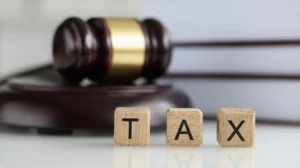Under Australian workplace law, it is a well-established position that certain persons cannot take adverse action against other defined persons, such as employers against employees. The Fair Work Act 2009 (Cth) (the Act) provides a plain English explanation of the prohibition against adverse action and the nature of adverse action.
Recently, and for the first time on this issue, the Federal Court has expressed division on the construction of adverse action provisions under the Act. Employers have had to face this quick turnaround in the effects of legal decision making.
Just what have the effects of this Court decision been, and what does this mean for claiming adverse action from now on?
Adverse Action under the Fair Work Act
Section 340 of the Act protects employees from adverse action, stating that:
1. A person must not take adverse action against another person:
a) because the other person:
(i) has a workplace right; or
(ii) has, or has not, exercised a workplace right; or
(iii) proposes or proposes not to, or has at any time proposed or proposed not to, exercise a workplace right; or
b) to prevent the exercise of a workplace right by the other person.
Section 342 then explains the circumstances in which a person may take adverse action against another person. At subsection (1), adverse action may be taken by prescribed parties, including (but not limited to) an employer against an employee, a prospective employer against a prospective employee, or an employee against his or her employer.
An adverse action may take place in a range of circumstances tabled under section 342(1). In the instance of when an employer takes adverse action against an employee, these circumstances include if the employer:
a) dismisses the employee; or
b) injures the employee in his or her employment; or
c) alters the position of the employee to the employee’s prejudice; or
d) discriminates between the employee and other employees of the employer.
The essence of the adverse action is in the person’s threatening to take action covered by subsection 1 or organising such action. Exceptions apply under section 342.
Both sections 340 and 342 are civil remedy provisions. This means that section 539 of the Act may apply where there is a breach of those provisions. Section 539 provides that a person affected by such a contravention, an industrial association or an inspector may claim an adverse action in the Federal Court or Federal Circuit Court. Further, the maximum penalty for a successful claim may be $6,600.
Court Decision Explained
PIA Mortgage Services Pty Ltd v King [2020] FCAFC 15 (PIA v King)
The facts are that Mr King was employed as the Chief Executive Officer of PIA, a mortgage broking business. Mr Wang was the sole director and shareholder of the business.
Mr Wang terminated Mr King’s employment, at which time a disagreement as to the amount of Mr. King’s termination pay ensued. Mr King claimed breach of contract against PIA, alleging that he was entitled to be retained for five years or payment accordingly. In response, PIA wrote to Mr King terminating his employment for alleged repudiation of contract.
Mr King instigated formal proceedings against PIA, making several claims including that PIA had contravened section 340 of the Act.
After an appeal by PIA against the initial decision, a cross-appeal by Mr King and final appeal by PIA, the Full Court of the Federal Court made a determination affirming the majority decision in Shea v TRUenergy Services Pty Ltd (No.6) [2014] FCA 271 (Shea No 6.). In Shea No 6., it was decided that an employee’s right to complain under section 341(1)(c)(ii) of the Act must be underpinned by a source of that entitlement or right, such as a contract of employment, award or legislation. The Court additionally endorsed the requirement that such a complaint be made in good faith and for a proper purpose.
Cummins South Pacific Pty Ltd v Keenan [2020] FCAFC 204 (Cummins v Keenan)
In this matter, Mr Keenan had worked for Cummins as an engineer. By the time Mr Keenan was terminated in November 2015, he was a senior manager and received a remuneration package exceeding $200,000.
Mr Keenan applied to the Federal Court for breaches of the Act and for relief under the Long Service Leave Act 1955 NSW No 38. Mr Keenan alleged adverse action under the Act by way of his termination due to making a number of genuine complaints and inquiries. In response to those complaints and inquiries, Mr Keenen claimed he was placed on a performance improvement plan and had an ethics complaint lodged against him.
After a finding in favour of Mr Keenan at the initial hearing, the Federal Court on appeal ruled that Mr Keenan should be reinstated, back-paid for the salary including superannuation that he missed because of his unlawful termination, and paid $20,000 in damages for hurt and humiliation. Cummins was also penalised $45,000 for contravening the Act.
The majority of the three-person Bench in this appeal expressed the view that the nature and content of a ‘workplace right’ as under section 341(1)(c)(ii) of the Act consists of the ability of an employee to make a complaint or inquiry in relation to their employment. In this, Justice Bromberg expressly stated his disagreement with the interpretation adopted in Shea No 6.
What is the effect of these decisions?
Clarity has been sought by members of the legal community as to the effect of the divergent decision in Cummins v Keenan following the decision in PIA v King. One view is that the decision in Cummins v Keenan might be precluded by the authoritative effect of the decision in PIA v King. Though this position appears to have logical merit, the doctrine of precedent as it applies presently to Cummins v Keenan would make that decision the standing authority.
If you have any enquiries as to the above, please don’t hesitate to contact a member of Coleman Greig’s Employment Law team, who would be happy to assist you today.














